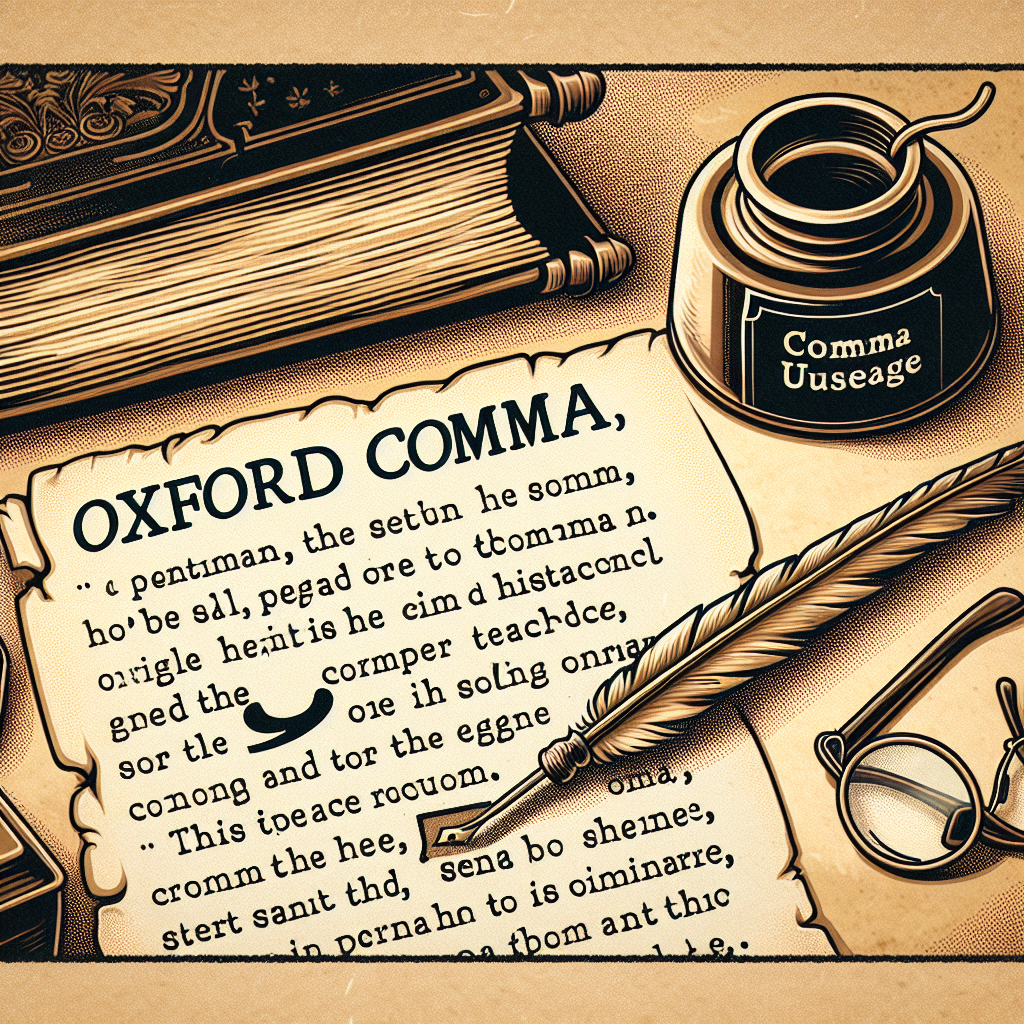Understanding Oxford Comma Usage
When it comes to writing, punctuation plays a crucial role in conveying precise meanings. The Oxford comma, also known as the serial comma, is a controversial punctuation mark that has sparked heated debates among writers and grammarians.
What is the Oxford Comma?
The Oxford comma is used before the final conjunction in a list of three or more items. For example, in the sentence “I like to eat apples, bananas, and oranges,” the Oxford comma is the comma after “bananas.”
Its usage may seem trivial at first glance, but the Oxford comma can significantly affect the clarity and meaning of a sentence. Without it, sentences can be ambiguous and open to misinterpretation.
Pros and Cons of Using the Oxford Comma
Proponents of the Oxford comma argue that its usage helps avoid confusion and ensures that each item in a list is clearly separated. They believe that it provides clarity and precision in writing.
However, opponents of the Oxford comma argue that it is unnecessary and can lead to repetitive and awkward sentence structures. They believe that it adds unnecessary clutter to sentences and disrupts the flow of writing.
Examples of Oxford Comma Usage
Let’s look at some examples to understand the impact of the Oxford comma:
- With Oxford comma: I enjoy cooking, reading, and hiking.
- Without Oxford comma: I enjoy cooking, reading and hiking.
In the first example, the Oxford comma clearly separates the activities, indicating that the speaker enjoys cooking, reading, and hiking as separate activities. In the second example, the lack of an Oxford comma can create confusion about whether “reading and hiking” is a combined activity.
Controversies Surrounding Oxford Comma Usage
The debate over the Oxford comma has been ongoing for years, with no clear consensus among writers and linguists. Some style guides, such as the AP Stylebook, discourage the use of the Oxford comma, while others, like the Chicago Manual of Style, advocate for its use.
Ultimately, the decision to use the Oxford comma comes down to personal preference and the style guide or editorial policy being followed. Writers should be aware of the potential impact of their punctuation choices on the clarity and readability of their writing.
Conclusion
While the Oxford comma may seem like a small detail, its usage can have a significant impact on the meaning and clarity of a sentence. Writers should carefully consider whether to use the Oxford comma based on the context and style guide they are following.
Understanding the nuances of punctuation, including the Oxford comma, is essential for effective communication and writing. By mastering the use of punctuation marks, writers can ensure that their messages are conveyed accurately and clearly.
#Understanding #Oxford #comma #usage
